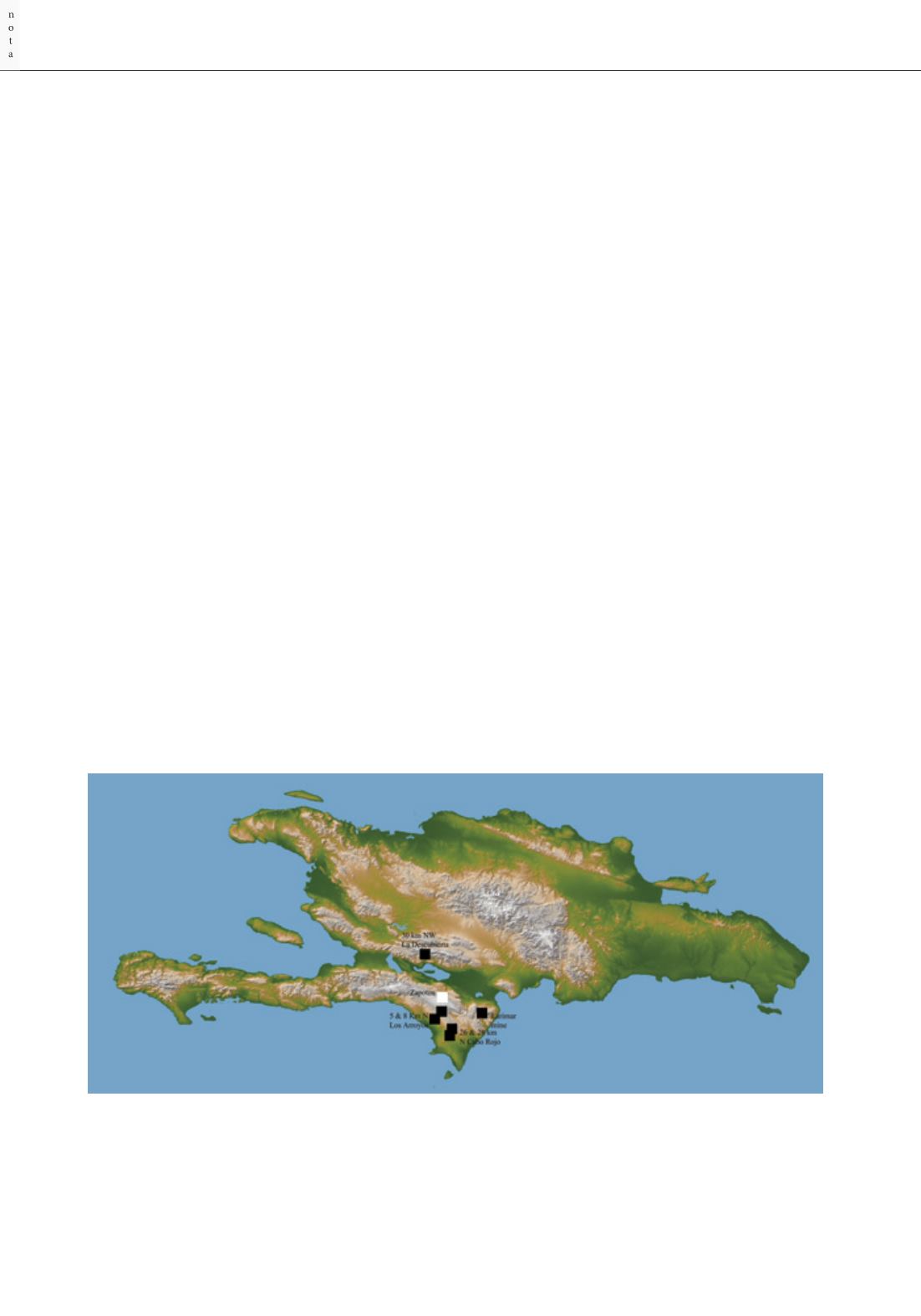

94
NOVITATES CARIBAEA
, No. 10, 2016
Measurements
. Body length: 21.0 mm, maximum body width: 7.5 mm, pronotum width:
6.0 mm.
Comments
. Previous collections of
N
.
hispaniola
were made between late June and early
December. The new specimen was collected in September, so it falls near the middle of
these dates. This species has been taken both from carrion traps and at black lights between
730-1930 m above sea level. The present specimen collection at 1540 m falls near the midpoint
of these elevations. The forest at Zapotén is dominated by mountain pine (
Pinus occidentalis
)
mixed with a variety of broadleaf vegetation. In contrast with the continental species of the
genus which have large distributions,
N. hispaniola
appears to have the smallest distribution
range of any New World species (Fig. 2), being restricted to the southwestern corner of the
Dominican Republic, a region less than 100 km
2
(Sikes & Peck, 2000). This border region of
Haiti and the Dominican Republic is a troubled habitat insufficiently protected even if located
in a remote montane area and within a national park. This area of unique biodiversity must be
saved from the ravages of poverty and indiscriminate exploitation by the producers of charcoal
and squatting peasants that damage these forests. The Enriquillo-Bahoruco-Jaragua biosphere
reserve, which includes this national park and two other adjacent parks, has been recognized as a
region containing a very important representation of the biodiversity in the Dominican Republic,
including a large number of threatened endemic species (León
et al
., 2011). This unique beetle
is a rare species potentially threatened with extinction. As commented by its describers, such
species possessing unique morphological characteristics are very important for phylogenetic
studies (e.g., Sikes & Venables, 2013) to better understand the evolution of the whole group.
The divergence data analysis of Sikes & Venables (2013) estimated that the speciation event
that resulted in
N. hispaniola
splitting from its sister species
N. pustulatus
occurred between
35-15 million years ago. It would be interesting to investigate whether
N. hispaniola
is also
a parasitoid of snake eggs as it has been documented for
N. pustulatus
(Smith
et al
., 2007).
The conservation status of
N. hispaniola
should be further investigated and its conservation
should become a priority in the park management plans.
Figure 2. Map of Hispaniola showing the approximate distribution of localities at which
Nicrophorus hispaniola
has been collected.
















